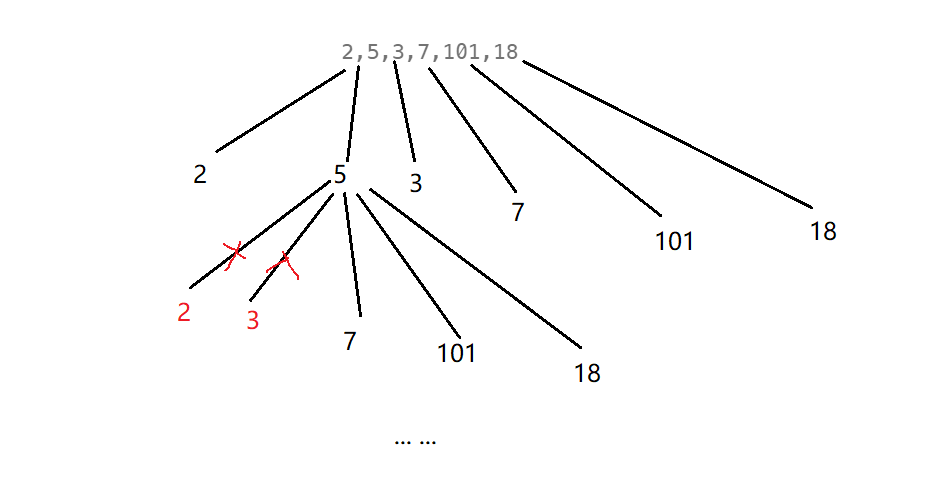
华为OD机试 2024E卷题库疯狂收录中,刷题点这里
专栏导读
本专栏收录于《华为OD机试真题(Python/JS/C/C++)》。
刷的越多,抽中的概率越大,私信哪吒,备注华为OD,加入华为OD刷题交流群,每一题都有详细的答题思路、详细的代码注释、3个测试用例、为什么这道题采用XX算法、XX算法的适用场景,发现新题目,随时更新,全天CSDN在线答疑。
一、题目描述
给定一个连续不包含空格字符的字符串,该字符串仅包含英文小写字母及英文标点符号(逗号、句号、分号),同时给定词库,对该字符串进行精确分词。
说明:
- 精确分词:字符串分词后,不会出现重叠。例如 “ilovechina”,不同切分后可得到 “i”, “love”, “china”。
- 标点符号不分词,仅用于断句。
- 词库:根据常识及词库统计出来的常用词汇。例如:dictionary={“i”,“love”,“china”,“ilovechina”,“lovechina”}。
- 分词原则:采用分词顺序优先且最长匹配原则。“ilovechina”,假设分词结果[i,ilove,lo,love,ch,china,lovechina] 则输出 [ilove,china]
- 错误输出:[i, lovechina],原因:“ilove” > 优先于 “lovechina” 成词。
- 错误输出:[i, love, china],原因:“ilove” > “i”,遵循最长匹配原则。
二、输入描述
- 字符串长度限制:0 < length < 256
- 词库长度限制:0 < length < 100000
- 第一行输入待分词语句 “ilovechina”
- 第二行输入中文词库 “i, love, china, ch, na, ve, lo, this, is, the, word”
三、输出描述
按顺序输出分词结果 “i, love, china”
1、输入
ilovechina
i,love,china,ch,na,ve,lo,this,is,the,word
2、输出
i,love,china
3、说明
输入的字符串被按最长匹配原则分为 “i”, “love”, “china”。
四、测试用例
1、输入
ilovech
i,love,china,ch,na,ve,lo,this,is,the,word
2、输出
i,love,ch
3、说明
输入的字符串被按最长匹配原则分为 “i”, “love”, “ch”。
五、解题思路
- 解析输入:
- 读取待分词的字符串。
- 读取词库,并将其转换为一个集合(Set),以便于快速查找。
- 处理标点符号:
- 标点符号仅用于断句,不参与分词。可以使用正则表达式将字符串按标点符号分割。
- 分词处理:
- 对每个子字符串进行分词,遵循最长匹配原则。
- 从字符串的第一个字符开始,尝试匹配最长的单词,如果匹配成功,将该单词加入结果集,继续处理剩下的部分。
- 输出结果:
- 将所有子字符串的分词结果组合起来,并按要求格式输出。
六、Python算法源码
import re
def segment(sentence, dictionary):
result = []
length = len(sentence)
start = 0
while start < length:
longest_word = None
# 从当前起始位置向后查找
for end in range(start + 1, length + 1):
word = sentence[start:end]
if word in dictionary:
if longest_word is None or len(word) > len(longest_word):
longest_word = word
if longest_word is not None:
result.append(longest_word)
start += len(longest_word)
else:
start += 1
return result
def main():
# 读取待分词语句
input_string = input("请输入待分词语句:")
# 读取词库
dictionary_input = input("请输入词库:")
# 将词库字符串解析成集合,方便后续查找
dictionary = set(dictionary_input.split(","))
# 使用正则表达式按标点符号将输入字符串分割成多个子字符串
sentences = re.split(r'[,.]', input_string)
# 存储分词结果
result = []
# 对每个子字符串进行分词处理
for sentence in sentences:
result.extend(segment(sentence.strip(), dictionary))
# 按要求格式输出分词结果
print(", ".join(result))
if __name__ == "__main__":
main()
七、JavaScript算法源码
function segment(sentence, dictionary) {
const result = [];
const length = sentence.length;
let start = 0;
while (start < length) {
let longestWord = null;
// 从当前起始位置向后查找
for (let end = start + 1; end <= length; end++) {
const word = sentence.substring(start, end);
if (dictionary.has(word)) {
if (longestWord === null || word.length > longestWord.length) {
longestWord = word;
}
}
}
if (longestWord !== null) {
result.push(longestWord);
start += longestWord.length;
} else {
start += 1;
}
}
return result;
}
function main() {
// 读取待分词语句
const input = prompt("请输入待分词语句:");
// 读取词库
const dictionaryInput = prompt("请输入词库:");
// 将词库字符串解析成集合,方便后续查找
const dictionary = new Set(dictionaryInput.split(","));
// 使用正则表达式按标点符号将输入字符串分割成多个子字符串
const sentences = input.split(/[,.;]/);
// 存储分词结果
const result = [];
// 对每个子字符串进行分词处理
for (const sentence of sentences) {
result.push(...segment(sentence.trim(), dictionary));
}
// 按要求格式输出分词结果
console.log(result.join(", "));
}
// 调用主函数
main();
八、C算法源码
#include <stdio.h>
#include <stdlib.h>
#include <string.h>
#include <ctype.h>
#define MAX_WORD_LENGTH 100
#define MAX_SENTENCE_LENGTH 1000
#define MAX_DICTIONARY_SIZE 100
// 字符串切割函数,类似于Python的split()
char** split(const char* str, const char* delim, int* count) {
char* str_copy = strdup(str); // 复制字符串,以免修改原字符串
char* token = strtok(str_copy, delim);
char** result = malloc(MAX_SENTENCE_LENGTH * sizeof(char*));
*count = 0;
while (token != NULL) {
result[(*count)++] = strdup(token);
token = strtok(NULL, delim);
}
free(str_copy);
return result;
}
// 判断词库中是否包含某个单词
int is_in_dictionary(char* word, char dictionary[MAX_DICTIONARY_SIZE][MAX_WORD_LENGTH], int dict_size) {
for (int i = 0; i < dict_size; i++) {
if (strcmp(word, dictionary[i]) == 0) {
return 1;
}
}
return 0;
}
// 分词函数,遵循最长匹配原则
void segment(char* sentence, char dictionary[MAX_DICTIONARY_SIZE][MAX_WORD_LENGTH], int dict_size, char result[MAX_SENTENCE_LENGTH][MAX_WORD_LENGTH], int* result_count) {
int length = strlen(sentence);
int start = 0;
*result_count = 0;
while (start < length) {
char longest_word[MAX_WORD_LENGTH] = "";
int longest_length = 0;
for (int end = start + 1; end <= length; end++) {
char word[MAX_WORD_LENGTH];
strncpy(word, sentence + start, end - start);
word[end - start] = '\0';
if (is_in_dictionary(word, dictionary, dict_size) && strlen(word) > longest_length) {
strcpy(longest_word, word);
longest_length = strlen(word);
}
}
if (longest_length > 0) {
strcpy(result[*result_count], longest_word);
(*result_count)++;
start += longest_length;
} else {
start++;
}
}
}
int main() {
char input[MAX_SENTENCE_LENGTH];
char dictionary_input[MAX_SENTENCE_LENGTH];
char dictionary[MAX_DICTIONARY_SIZE][MAX_WORD_LENGTH];
int dict_size = 0;
// 读取待分词语句
printf("请输入待分词语句:\n");
fgets(input, MAX_SENTENCE_LENGTH, stdin);
input[strcspn(input, "\n")] = '\0'; // 去除换行符
// 读取词库
printf("请输入词库:\n");
fgets(dictionary_input, MAX_SENTENCE_LENGTH, stdin);
dictionary_input[strcspn(dictionary_input, "\n")] = '\0'; // 去除换行符
// 将词库字符串解析成二维数组
int word_count;
char** words = split(dictionary_input, ",", &word_count);
for (int i = 0; i < word_count; i++) {
strcpy(dictionary[dict_size++], words[i]);
free(words[i]);
}
free(words);
// 使用标点符号将输入字符串分割成多个子字符串
int sentence_count;
char** sentences = split(input, ",.;", &sentence_count);
// 存储分词结果
char result[MAX_SENTENCE_LENGTH][MAX_WORD_LENGTH];
int result_count;
// 对每个子字符串进行分词处理
for (int i = 0; i < sentence_count; i++) {
segment(sentences[i], dictionary, dict_size, result, &result_count);
for (int j = 0; j < result_count; j++) {
if (i > 0 || j > 0) {
printf(", ");
}
printf("%s", result[j]);
}
free(sentences[i]);
}
free(sentences);
printf("\n");
return 0;
}
九、C++算法源码
#include <iostream>
#include <vector>
#include <string>
#include <sstream>
#include <cstring>
#include <algorithm>
using namespace std;
// 字符串分割函数,类似于Python的split()
vector<string> split(const string &str, const string &delim) {
vector<string> tokens;
size_t prev = 0, pos = 0;
do {
pos = str.find_first_of(delim, prev);
if (pos == string::npos) pos = str.length();
string token = str.substr(prev, pos - prev);
if (!token.empty()) tokens.push_back(token);
prev = pos + 1;
} while (pos < str.length() && prev < str.length());
return tokens;
}
// 判断词库中是否包含某个单词
bool is_in_dictionary(const string &word, const vector<string> &dictionary) {
return find(dictionary.begin(), dictionary.end(), word) != dictionary.end();
}
// 分词函数,遵循最长匹配原则
vector<string> segment(const string &sentence, const vector<string> &dictionary) {
vector<string> result;
size_t length = sentence.length();
size_t start = 0;
while (start < length) {
string longest_word;
size_t longest_length = 0;
for (size_t end = start + 1; end <= length; ++end) {
string word = sentence.substr(start, end - start);
if (is_in_dictionary(word, dictionary) && word.length() > longest_length) {
longest_word = word;
longest_length = word.length();
}
}
if (!longest_word.empty()) {
result.push_back(longest_word);
start += longest_length;
} else {
start++;
}
}
return result;
}
int main() {
string input;
string dictionary_input;
// 读取待分词语句
cout << "请输入待分词语句:" << endl;
getline(cin, input);
// 读取词库
cout << "请输入词库:" << endl;
getline(cin, dictionary_input);
// 将词库字符串解析成集合,方便后续查找
vector<string> dictionary = split(dictionary_input, ",");
// 使用标点符号将输入字符串分割成多个子字符串
vector<string> sentences = split(input, ",.;");
// 存储分词结果
vector<string> result;
// 对每个子字符串进行分词处理
for (const string &sentence : sentences) {
vector<string> segmented = segment(sentence, dictionary);
result.insert(result.end(), segmented.begin(), segmented.end());
}
// 按要求格式输出分词结果
for (size_t i = 0; i < result.size(); ++i) {
if (i > 0) {
cout << ", ";
}
cout << result[i];
}
cout << endl;
return 0;
}
🏆下一篇:华为OD机试真题 - 简易内存池(Python/JS/C/C++ 2024 E卷 200分)
🏆本文收录于,华为OD机试真题(Python/JS/C/C++)
刷的越多,抽中的概率越大,私信哪吒,备注华为OD,加入华为OD刷题交流群,每一题都有详细的答题思路、详细的代码注释、3个测试用例、为什么这道题采用XX算法、XX算法的适用场景,发现新题目,随时更新,全天CSDN在线答疑。















![[Algorithm][综合训练][kotori和n皇后][取金币][矩阵转置]详细讲解](https://i-blog.csdnimg.cn/direct/ea5089a6fd844206afd37583023865b2.png)




